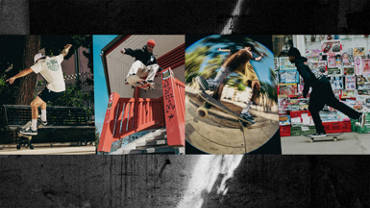We will show you how you can learn to brake your longboard safely.
The Footbreak
The footbreak is the usual stopping technique and is adopted from classic skateboarding.
• Step 1: Choose a straight and well cruisable road with no traffic
• Step 2: Push yourself forward slightly
• Step 3: Roll a few meters in a controlled and stable position
• Step 4: Now use your back foot and let it grind on the bottom next to your longboard until you have no more speed
The more pressure you put on your back leg, the faster you can stop. Please note that a higher speed can significantly lengthen the braking process.
We also strongly recommend shoes with long-lasting soles. Skate shoesare particularly advantageous here. These are reinforced in the areas on the sole and do not wear out as quickly. In addition, skate shoes have a much better grip on the longboard.
The SLIDE
The Slide (Colemann Slide) is one of the most stylish ways to brake, but it also has a significantly higher level of difficulty.
• Step 1: Choose a slightly descending road
• Step 2: Stand on your longboard stable and with a wide stance
• Step 3: Now bend your knees and let yourself fall back a bit while keeping your balance
• Step 4: Push your back foot 90 ° forward to position the longboard sideways
• Step 5: As soon as you lose enough speed, you just get up again
There are different versions of the slide. The further you lean back, the more you change the focus. You can lean on the asphalt with your hand, but we also strongly recommend gloves. There are also special downhill gloves for longboarders.
This technique is mainly used when going downhill.

Picture: Globe
Carving
Carving comes from snowboarding or skiing, but this is also an option to slow down on your longboard.
When carving, you reduce the speed by making tight turns. This is a lot of fun, but it can no longer be carried out at higher speeds to slow down or even brake.

Picture: Globe
Jump off?
We only recommend this when there is no other way to avoid a serious crash. Due to higher speeds, jumping off can be very dangerous and painful.
It takes practice to brake the longboard properly. Longboarding is fun, but you should always be able to stop and assess the speed correctly.
When you fall, the hands, wrists and head are particularly at risk and that's why safety comes first! Use protective skate clothing - because helmets are cool!

Picture: ParisTruck CO
Common mistakes and how you can avoid them
1. wrong foot position
A common mistake is positioning your feet incorrectly, which can lead to a loss of control over your longboard. Make sure that the front foot is stable and firm on the board, while the back foot remains flexible to provide support when braking.
2. Excessive pressure
Too much pressure on the foot or when sliding can lead to a loss of control. Always start with light pressure and gradually increase it.
3. Insufficient preparation
Practise the various braking techniques in a safe environment before you go out into traffic. You can also improve your coordination on balance boards, for example. Solid preparation is the key to safety.
4. Incorrect setup
Make sure the wheels match the size if you are assembling your longboard yourself or are replacing the original wheels. Too little distance between the wheels and the deck can easily lead to so-called wheelbites. This means that the wheels could rub against the underside of the deck during tight turns and, in the worst case, cause the board to block abruptly. Make sure that the trucks are compatible with the deck size.
 Garanzia
Garanzia 



